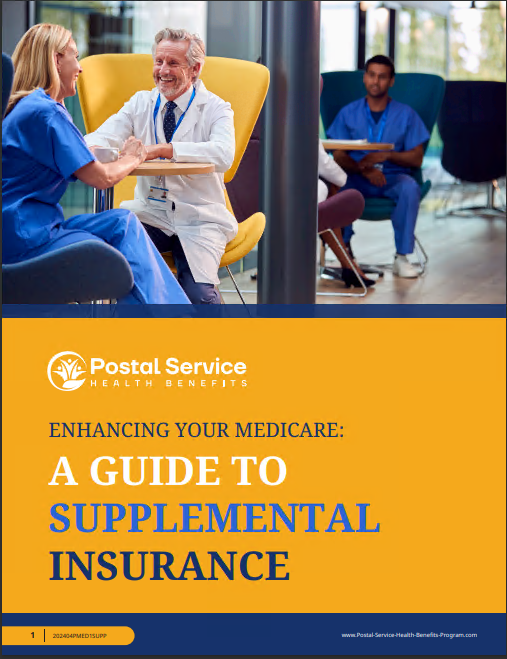Key Takeaways:
- The Postal Service Health Benefits (PSHB) program is set to transform how USPS employees and retirees manage their healthcare in 2025.
- Preparing now by understanding your options and Medicare requirements can ensure a smooth transition and uninterrupted coverage.
What the PSHB Program Means for You
The clock is ticking on one of the most significant healthcare changes for USPS employees and retirees. Starting January 1, 2025, the new Postal Service Health Benefits (PSHB) program will replace the Federal Employees Health Benefits (FEHB) system. This shift is about more than just paperwork; it’s a comprehensive overhaul aimed at tailoring healthcare coverage specifically for USPS workers and their families.
Understanding how these changes will impact your healthcare and taking proactive steps now is critical to staying ahead of the curve. Whether you’re actively employed or retired, you have an opportunity to review your options, protect your benefits, and prepare for this transition with confidence.
The Transition Timeline: Key Dates
Mark Your Calendar
- Open Season: November 11 to December 9, 2024
- New Coverage Begins: January 1, 2025
During Open Season, you’ll have the chance to:
- Review your plan options under PSHB.
- Make any necessary changes to ensure your healthcare needs are met.
Missing this window could result in coverage gaps or unexpected costs, so it’s essential to take action early. Automatic enrollment may provide a safety net, but actively reviewing your options will help you make informed decisions that work best for you.
How Will the PSHB Program Work?
Replacing FEHB Coverage
The PSHB program is exclusive to USPS employees and retirees, separating postal workers from the broader FEHB system. This change is designed to:
- Provide more targeted coverage options.
- Address the unique healthcare needs of USPS workers.
- Ensure better coordination with Medicare for retirees.
By focusing solely on the USPS workforce, PSHB aims to deliver benefits that align closely with your specific healthcare requirements.
Automatic Enrollment
If you’re currently enrolled in FEHB, you’ll automatically transition to a comparable PSHB plan. While this ensures that no one is left without coverage, it’s still a good idea to review the details of your new plan and confirm it meets your expectations.
Medicare and PSHB: What You Need to Know
Medicare Part B: A New Requirement
One of the most significant changes under PSHB is the requirement for Medicare-eligible retirees to enroll in Medicare Part B. This integration ensures that:
- Medicare acts as your primary insurance.
- PSHB provides secondary coverage to fill in gaps.
This coordination is designed to reduce out-of-pocket expenses while maintaining comprehensive coverage. If you’re eligible but not currently enrolled in Medicare Part B, now is the time to start planning.
Are There Exemptions?
Some retirees may be exempt from this requirement, such as those who retired before January 1, 2025, and are not currently enrolled in Part B. Be sure to check with USPS or a benefits counselor to confirm whether this applies to you.
Financial Impacts of the Transition
Premium Contributions
As with the FEHB system, the federal government will continue to cover a significant portion of your premiums under PSHB. The exact contribution depends on the plan you select, so reviewing your options carefully during Open Season is essential.
Prescription Drug Cost Cap
One of the most anticipated changes is the $2,000 annual cap on out-of-pocket prescription drug expenses, set to take effect in 2025 under Medicare Part D. This cap offers significant financial relief for retirees managing high medication costs.
Spreading Prescription Costs
The PSHB program also introduces flexible payment options for large prescription drug costs. This feature allows you to spread out payments over time, making it easier to budget for necessary medications without a financial strain.
Steps You Should Be Taking Right Now
Step 1: Review Your Current Coverage
Start by looking at your current FEHB plan to evaluate:
- Whether your preferred doctors and specialists are included.
- How well your plan covers prescription drug costs.
- Any potential gaps in coverage that could be addressed under PSHB.
Understanding where you stand now will help you make better decisions during Open Season.
Step 2: Get to Know Your PSHB Options
Explore the plans available under the PSHB program. Pay close attention to:
- Provider networks.
- Cost-sharing details, like deductibles and copayments.
- Additional perks, such as wellness programs or telehealth services.
Step 3: Confirm Your Medicare Enrollment
If you or a family member are Medicare-eligible, ensure you’re enrolled in Part B. Delaying enrollment could result in penalties and higher premiums, so it’s best to take care of this sooner rather than later.
Why This Matters for Retirees
Avoiding Penalties and Gaps
For retirees, ensuring Medicare enrollment is critical to avoiding late penalties and coverage gaps. The new PSHB plans rely heavily on Medicare coordination, making timely enrollment essential for uninterrupted benefits.
Maximizing Your Coverage
PSHB’s integration with Medicare is designed to provide seamless, comprehensive coverage. By reviewing your options and understanding how the two systems work together, you can maximize your benefits and reduce out-of-pocket expenses.
Open Season: Your Opportunity to Take Control
Don’t Rely Solely on Automatic Enrollment
While automatic enrollment provides a safety net, it’s not a one-size-fits-all solution. Open Season gives you the power to:
- Switch to a plan that better suits your needs.
- Explore new benefits and coverage options.
Questions to Consider
- Does the plan include your current doctors and specialists?
- How does it handle prescription drug coverage?
- Are there additional benefits, like wellness programs, that appeal to you?
Tools and Resources to Help You Prepare
USPS and OPM Guidance
Take advantage of resources provided by USPS and the Office of Personnel Management (OPM), including:
- Online plan comparison tools.
- Informational webinars.
- Customer service hotlines for questions.
Benefits Counselors
If you’re feeling overwhelmed, benefits counselors can provide personalized advice to help you navigate the transition and make the best choices for your situation.
Staying Ahead of the 2025 Transition
The move to the PSHB program is more than just a policy change—it’s an opportunity to rethink your healthcare coverage and make choices that align with your needs. By staying proactive, exploring your options, and ensuring Medicare compliance, you can protect your benefits and set yourself up for a smoother transition.
Don’t wait until the last minute. Start preparing today to ensure you’re ready for 2025 and beyond.







